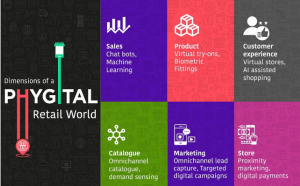“Culture does not change because we desire to change it. Culture changes when the organization is transformed; the culture reflects the realities of people working together every day.”
— Frances Hesselbein, The Key to Cultural Transformation, Leader to Leader (Spring 1999)
To say “change is hard” is pretty much like saying, “the sky is blue.” We all accept it as reality. It also goes without saying that, as society, technology, and competitive forces shift at an ever-accelerating rate, organizational change—and transformation—has never been greater.
Any organizational leader would agree that business model transformation demands innovation across multiple dimensions. Orchestrating the delicate interplay of people, process, and technology to continually bring new value to customers is an immense challenge, both strategically and operationally.
Unfortunately, the odds of organizations successfully orchestrating large-scale change are poor, at best. According to an article published by McKinsey in 2016, 70% of complex, large-scale change programs fail. This places incredible pressure on leaders to find ways to beat these miserable odds in the quest to ensure the continued growth and health of their corporations.
This is a key reason why, as a Decision Intelligence company, a rapidly growing dimension of our client engagements involves helping them apply various elements of our strategic framework to drive meaningful organizational change.
“Physician, Heal Thyself” – Gongos’ Own Transformational Journey
One of the reasons we are so passionate about helping clients change is that, at Gongos, we actually take our own medicine. In fact, the entire innovation of our business model has been achieved by applying the same change management principles we use with our clients’ initiatives.
In the past six years, Gongos has transformed itself from being a market research firm to a decision intelligence company. As a company rooted in restless dissatisfaction, we knew that broadening our value in a world where data is trying to win required transforming how corporations discover, internalize, and act on consumer information. And, to do this would require disrupting our founding business model, forging a new vision, integrating new skillsets, and re-engineering our people systems to engage with our clients in a truly customer-centric manner.
Needless to say, accomplishing this is easier said than done. Driving a shift of this magnitude at all levels of our company required us to embrace change management, not just as a practice, but as an organizational imperative.
Along our journey, we’ve learned more than a few things about the pitfalls and possibilities of driving meaningful organizational change. Here are several things to keep in mind to successfully champion change within your organization:
1. Embrace change management as a competency
As Gongos embarked on its own transformation, we recognized that the historically staid world of market research was being buffeted and threatened by megatrends like big data, the mobile revolution, and the increasingly elusive challenge of consumer engagement.
In opening our eyes to this reality, we recognized the truth of the lyrics of Rush’s Tom Sawyer: “Changes aren’t permanent / But change is.” With that in mind, we recognized that the work of driving change within our organization won’t ever have an end point. There will always be change, and the smartest thing to do is consciously cultivate the ability to effectively manage and sustain changes, both big and small.
It goes without saying that it is increasingly important to look at change management as a core competency rather than a framework that gets dusted off and occasionally employed.
2. Start with the “why”
Borrowing the title of Simon Sinek’s acclaimed book, Start with Why: How Great Leaders Inspire Everyone to Take Action, another key element of change management is communicating to the organization the “why” behind it.
In our case, this took the form of CEO, Camille Nicita and I presenting our company’s 2020 vision to employees in the fall of 2012. We made the case for reimagining how Gongos would continue to thrive amid burgeoning societal, technological, and industry trends. This focus on the horizon was critical since it articulated the key proof points behind our evolution while creating immediacy for the organization to embrace it. Additionally, it provided a broad roadmap for how the organization would evolve over time.
Starting with the “why” is effective because it works on two fronts: It appeals to the emotional core of the organization while simultaneously speaking to the rational mind. Without it, leaders risk charging up hills and having the organization not understand why they’re being asked to climb, nor having the internal motivation to make the efforts asked of them.
3. Script the critical moves
It’s one thing for people to be inspired to change. It’s entirely another for them to know how to go about changing ingrained ways of thinking and behaving. As opposed to the “air war” of the previous point, this strategy is intended to support the “ground war” of change at an individual level.
In their book, Switch: How to Change When Change is Hard, Dan and Chip Heath use the term “script the critical moves” as the antidote for people overwhelmed with the task of making significant changes. In our case, “scripting the critical moves” meant identifying small—but significant—changes employees could make to reflect our new strategic direction.
For example, we developed a tool that would help teams reframe our clients’ challenges from that of meeting a specific set of research objectives to attacking them from a strategic business perspective. This gave employees a playbook they could use to approach client challenges in a way that was consistent with our new vision. By scripting the questions, we helped drive important changes in employees’ mindsets in very tangible, practical ways.
4. Empower people to be the change
Noted systems thinker and MIT lecturer Peter Senge once said, “People don’t resist change. They resist being changed!” There can be no meaningful or enduring change until all levels of the organization take ownership of their role and authority within it.
At Gongos, this has taken the form of completely restructuring our people system into Centers of Excellence (COE). Beyond creating a new structure on paper, we’ve empowered the leaders of each COE to own various elements of operationalizing our decision intelligence strategy. This has included making some COEs responsible for building out new practice areas such as design thinking or radically improving existing processes.
Ultimately, these new layers of authority are accompanied with new levels of accountability to have fully internalized our vision. This not only ensures their decisions are aligned with our overall strategy but is simultaneously building up tiers of new leaders in our organization.
Hopefully, these four principles point to the notion that true change only happens when people experience and co-create a new reality together. People have to model the behavior before the business model can realize its full potential. While the hard work of change may appear to be a top-down directive, it’s not until the individuals within an organization fully embody it that transformation occurs.
Originally published here.
Business & Finance Articles on Business 2 Community(48)
Report Post





